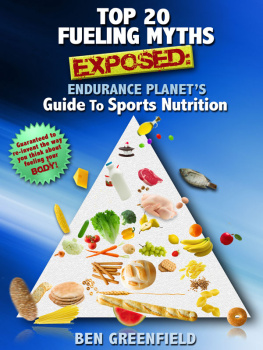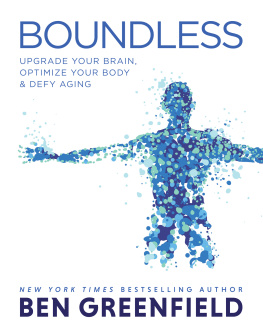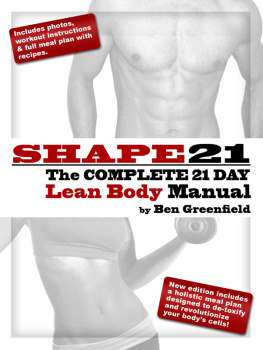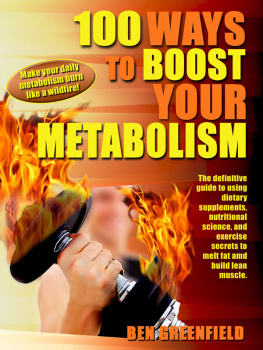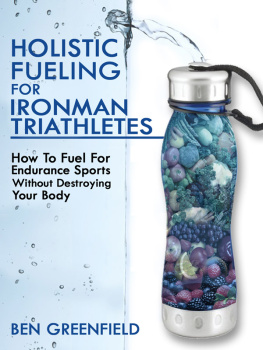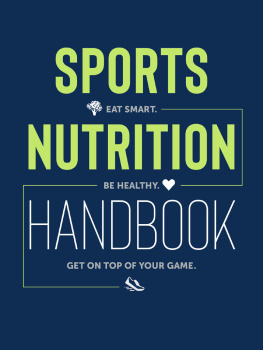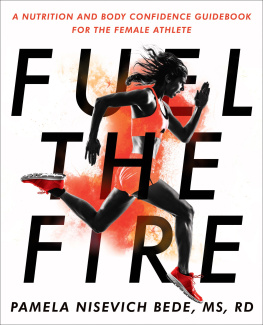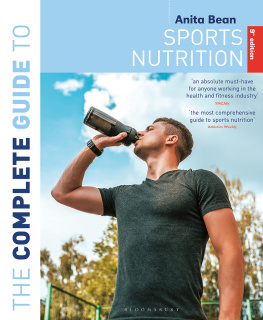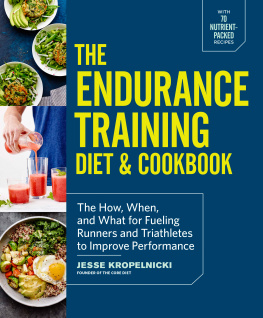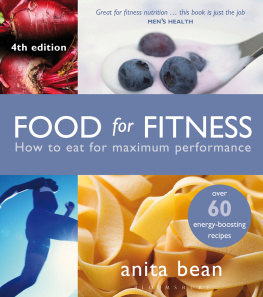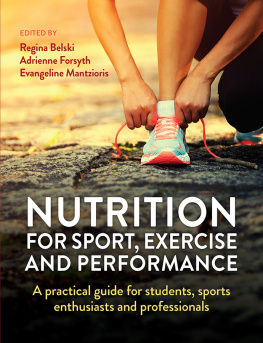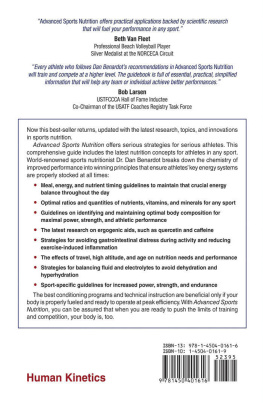Prior to beginning any exercise program, you must consult with your physician. You must also consult your physician before increasing the intensity of your training. The information in this book is intended for healthy individuals. Any application of the recommended material in this book is at the sole risk of the reader, and at the readers discretion. Responsibility of any injuries or other adverse effects resulting from the application of any of the information provided within this book is expressly disclaimed.
Price World Publishing
www.PriceWorldPublishing.com
Copyright 2012 by Ben Greenfield
All rights reserved. Neither this book, nor any parts within it may be sold or reproduced in any form without permission.
eISBN: 9781619841338
Endurance Planets Guide To Sports Nutrition
with Ben Greenfield:
20 Fueling Myths Exposed
In the weekly This Week In Sports Nutrition audio episode at Endurance Planet, I received many fantastic questions from our Facebook fans.
Ive noticed that in answering these questions, I often tend to find myself dispelling certain myths that seem to have worked their way into popular sports nutrition beliefs. Usually, these myths are based on research being misinterpreted or skewed, single case studies being turned into common practice, or just old wives tales.
So what youre about to read is something Ive been wanting to put together for a long time a solid collection of the most common sports and exercise fueling myths, why theyre wrong, and what you can do about it to maximize your health and performance.
Of course, if you have questions about what you learn in this book, just head over to the Endurance Planet Facebook page and ask away!
Finally, I feel compelled to thank you for purchasing this book. Endurance Planet is a complete labor of love. We get a little bit of money from ads, and that barely covers the costs to host the website and produce the show. When you support us by grabbing books like this that we produce, it really helps keep the whole thing going. So thanks!
Alright, lets do this
Ben Greenfield
Owner, Endurance Planet
Fueling Myth 1: You need to eat within 20-60 minutes post-workout.

Its likely that youve seen somewhere the legend of a mystical, magical fueling window. From exercise books, magazine articles and websites to nearly every resource that exists on sports nutrition, youll commonly read that after you finish a workout, you have 20-60 minutes to replace precious energy by consuming a mix carbohydrates and proteins.
Heres what they dont tell you:
In every study or experiment that has investigated the benefit of immediate post-workout nutrition replacement, subjects were fed after completing an exercise session that they had performed in a fasted or semi-starved state.
In other words, of course youre going to benefit if you eat a meal after a workout in which you were completely depleted of energy! But how many of us actually roll out of bed in the morning, hop on a bicycle, and ride hard for 90 minutes to 2 hours with absolutely no fuel? In most cases, this would be unpleasant, difficult and not a standard workout protocol.
So heres the deal: if youve had a pre-workout meal, or any other recent meal, theres not a crucial need to eat after your workout especially if youre still burping up that bar you ate before your exercise session. This is especially true if you have no other workouts planned for the day, since your body is able to totally replenish energy levels within 8 hours of normal eating when youre hungry.
But it does make sense to fuel within that 20-60 minute window if you A) havent had anything to eat before your workout and youre in a totally energy depleted state (such as an early morning hard session) and/or B) youre going to be working out again within the next 8 hours. In such a case, grab a 3:1 ratio of carbs to protein, such as a banana smoothie with a scoop of protein powder, and youll be set.
If you really want to geek out on the nitty-gritty, scientific details of this discussion, then you should check out the free Rock Star Triathlete Academy article Putting the Pre & Post Workout Nutrition Debate Into The Grave and also listen to Podcast Episode #73 of David Wardens Tri-Talk.
Fueling Myth 2: Whole wheat is a healthy source of carbohydrates.

Sometimes I kick myself for all those times I used to tell people to include lots of healthy whole grains. Heck, thats the message I grew up hearing, and I always gave myself a little mental clapping when I grabbed wheat bread instead of white bread off the shelf at the grocery store.
Alas, theres really not much difference between wheat and white, or between having a piece of wheat bread or just grabbing a few spoonfuls of white sugar.
The same goes for whole wheat pasta, whole wheat crackers, whole wheat bagels, fancy scones and biscottis made from 100% whole wheat! and the list goes on.
Not only is this modern wheat far genetically far removed from what our ancestors ate thousands of years ago, and thus far more capable of incomplete digestion and causing inflammation in our gut, but certain components of wheat cause wheat to raise blood sugar higher than nearly any other carbohydrate you can eat.
But the issue with grains in breakfast cereal goes beyond wheats capability to cause digestive inflammation or to massively spike your blood sugar levels. Even if you dont have something like Celiac disease or gluten intolerance, the gluten in wheat-based cereals may not be the hottest food ingredient for you to be throwing into your lunch bag or your morning cereal bowl.
A review paper in The New England Journal of Medicine listed 55 diseases that can be caused by eating gluten, including osteoporosis, inflammatory bowel disease, anemia, cancer, fatigue, canker sores, rheumatoid arthritis, lupus, multiple sclerosis, and nearly every autoimmune disease.
Think this doesnt apply to you? Undiagnosed gluten sensitivity runs rampant, and 99% of people who are gluten sensitive dont even know it (even though it is easily tested with a GI Panel).
Gluten is also linked to many psychiatric and neurological issues, such as migraines, epilepsy, nerve damage, autism, anxiety, depression and schizophrenia.
Stephan at Whole Health Source has this really compelling anecdote about eating plant-based grains:
Many plants use lectins as a defense against hungry animals. Thus, an animal that is not adapted to the lectins in the plant its eating may suffer damage or death. Grains and legumes (beans, soy, peas, peanuts) are rich in some particularly nasty lectins. Especially wheat. Some can degrade the intestinal lining. Some have the ability to pass through the intestinal lining and show up in the bloodstream. Once in the bloodstream, they may bind all sorts of carbohydrate-containing proteins in the body, including the insulin receptor. They could theoretically bind the leptin receptor, which also contains carbohydrate (its glycosylated), potentially desensitizing it. This remains to be tested, and to my knowledge is pure speculation at this point. What is not so speculative is that once youre leptin-resistant, you become obese and insulin resistant, and at that point you are intolerant to any type of carbohydrate.
The Weston A. Price foundation also points out the trouble with antinutrients in wheat and grains:
Next page
